#accelerated technological development
Explore tagged Tumblr posts
Text
Build high-end Mobile Applications!
Connect Us Today: https://www.triviti.in/

#app development#cloud#web development#acceleration#migration#appdev#applicationdevelopment#modernization#digital#technology#partnershipopportunities
3 notes
·
View notes
Text
Why Quantum Computing Will Change the Tech Landscape
The technology industry has seen significant advancements over the past few decades, but nothing quite as transformative as quantum computing promises to be. Why Quantum Computing Will Change the Tech Landscape is not just a matter of speculation; it’s grounded in the science of how we compute and the immense potential of quantum mechanics to revolutionise various sectors. As traditional…
#AI#AI acceleration#AI development#autonomous vehicles#big data#classical computing#climate modelling#complex systems#computational power#computing power#cryptography#cybersecurity#data processing#data simulation#drug discovery#economic impact#emerging tech#energy efficiency#exponential computing#exponential growth#fast problem solving#financial services#Future Technology#government funding#hardware#Healthcare#industry applications#industry transformation#innovation#machine learning
1 note
·
View note
Text
Accelerating AI tasks while preserving data security
New Post has been published on https://thedigitalinsider.com/accelerating-ai-tasks-while-preserving-data-security/
Accelerating AI tasks while preserving data security


With the proliferation of computationally intensive machine-learning applications, such as chatbots that perform real-time language translation, device manufacturers often incorporate specialized hardware components to rapidly move and process the massive amounts of data these systems demand.
Choosing the best design for these components, known as deep neural network accelerators, is challenging because they can have an enormous range of design options. This difficult problem becomes even thornier when a designer seeks to add cryptographic operations to keep data safe from attackers.
Now, MIT researchers have developed a search engine that can efficiently identify optimal designs for deep neural network accelerators, that preserve data security while boosting performance.
Their search tool, known as SecureLoop, is designed to consider how the addition of data encryption and authentication measures will impact the performance and energy usage of the accelerator chip. An engineer could use this tool to obtain the optimal design of an accelerator tailored to their neural network and machine-learning task.
When compared to conventional scheduling techniques that don’t consider security, SecureLoop can improve performance of accelerator designs while keeping data protected.
Using SecureLoop could help a user improve the speed and performance of demanding AI applications, such as autonomous driving or medical image classification, while ensuring sensitive user data remains safe from some types of attacks.
“If you are interested in doing a computation where you are going to preserve the security of the data, the rules that we used before for finding the optimal design are now broken. So all of that optimization needs to be customized for this new, more complicated set of constraints. And that is what [lead author] Kyungmi has done in this paper,” says Joel Emer, an MIT professor of the practice in computer science and electrical engineering and co-author of a paper on SecureLoop.
Emer is joined on the paper by lead author Kyungmi Lee, an electrical engineering and computer science graduate student; Mengjia Yan, the Homer A. Burnell Career Development Assistant Professor of Electrical Engineering and Computer Science and a member of the Computer Science and Artificial Intelligence Laboratory (CSAIL); and senior author Anantha Chandrakasan, dean of the MIT School of Engineering and the Vannevar Bush Professor of Electrical Engineering and Computer Science. The research will be presented at the IEEE/ACM International Symposium on Microarchitecture.
“The community passively accepted that adding cryptographic operations to an accelerator will introduce overhead. They thought it would introduce only a small variance in the design trade-off space. But, this is a misconception. In fact, cryptographic operations can significantly distort the design space of energy-efficient accelerators. Kyungmi did a fantastic job identifying this issue,” Yan adds.
Secure acceleration
A deep neural network consists of many layers of interconnected nodes that process data. Typically, the output of one layer becomes the input of the next layer. Data are grouped into units called tiles for processing and transfer between off-chip memory and the accelerator. Each layer of the neural network can have its own data tiling configuration.
A deep neural network accelerator is a processor with an array of computational units that parallelizes operations, like multiplication, in each layer of the network. The accelerator schedule describes how data are moved and processed.
Since space on an accelerator chip is at a premium, most data are stored in off-chip memory and fetched by the accelerator when needed. But because data are stored off-chip, they are vulnerable to an attacker who could steal information or change some values, causing the neural network to malfunction.
“As a chip manufacturer, you can’t guarantee the security of external devices or the overall operating system,” Lee explains.
Manufacturers can protect data by adding authenticated encryption to the accelerator. Encryption scrambles the data using a secret key. Then authentication cuts the data into uniform chunks and assigns a cryptographic hash to each chunk of data, which is stored along with the data chunk in off-chip memory.
When the accelerator fetches an encrypted chunk of data, known as an authentication block, it uses a secret key to recover and verify the original data before processing it.
But the sizes of authentication blocks and tiles of data don’t match up, so there could be multiple tiles in one block, or a tile could be split between two blocks. The accelerator can’t arbitrarily grab a fraction of an authentication block, so it may end up grabbing extra data, which uses additional energy and slows down computation.
Plus, the accelerator still must run the cryptographic operation on each authentication block, adding even more computational cost.
An efficient search engine
With SecureLoop, the MIT researchers sought a method that could identify the fastest and most energy efficient accelerator schedule — one that minimizes the number of times the device needs to access off-chip memory to grab extra blocks of data because of encryption and authentication.
They began by augmenting an existing search engine Emer and his collaborators previously developed, called Timeloop. First, they added a model that could account for the additional computation needed for encryption and authentication.
Then, they reformulated the search problem into a simple mathematical expression, which enables SecureLoop to find the ideal authentical block size in a much more efficient manner than searching through all possible options.
“Depending on how you assign this block, the amount of unnecessary traffic might increase or decrease. If you assign the cryptographic block cleverly, then you can just fetch a small amount of additional data,” Lee says.
Finally, they incorporated a heuristic technique that ensures SecureLoop identifies a schedule which maximizes the performance of the entire deep neural network, rather than only a single layer.
At the end, the search engine outputs an accelerator schedule, which includes the data tiling strategy and the size of the authentication blocks, that provides the best possible speed and energy efficiency for a specific neural network.
“The design spaces for these accelerators are huge. What Kyungmi did was figure out some very pragmatic ways to make that search tractable so she could find good solutions without needing to exhaustively search the space,” says Emer.
When tested in a simulator, SecureLoop identified schedules that were up to 33.2 percent faster and exhibited 50.2 percent better energy delay product (a metric related to energy efficiency) than other methods that didn’t consider security.
The researchers also used SecureLoop to explore how the design space for accelerators changes when security is considered. They learned that allocating a bit more of the chip’s area for the cryptographic engine and sacrificing some space for on-chip memory can lead to better performance, Lee says.
In the future, the researchers want to use SecureLoop to find accelerator designs that are resilient to side-channel attacks, which occur when an attacker has access to physical hardware. For instance, an attacker could monitor the power consumption pattern of a device to obtain secret information, even if the data have been encrypted. They are also extending SecureLoop so it could be applied to other kinds of computation.
This work is funded, in part, by Samsung Electronics and the Korea Foundation for Advanced Studies.
#accelerators#ai#applications#artificial#Artificial Intelligence#attackers#authentication#autonomous driving#career#career development#channel#chatbots#Community#computation#computer#computer chips#Computer Science#Computer Science and Artificial Intelligence Laboratory (CSAIL)#Computer science and technology#cybersecurity#data#data security#Delay#Design#development#devices#efficiency#Electrical Engineering&Computer Science (eecs)#Electronics#encryption
0 notes
Text
Technology Leadership Program from MIT-Professional-Education
Technology Leadership Program from MIT Professional Education is an intensive multi-modular program for technology leaders and practitioners.
https://northwest.education/ucla-owners-management-program/
#mit-techonology-leadership-program#mit-tlp#MIT-PROFESSIONAL-EDUCATION-TECHNOLOGY-LEADERSHIP-PROGRAM#mit-leadership-program#mit-leadership-certificate#mit-executive-leadership-program#chicago-booth-accelerated-development-program#chicago-booth-adp#chicago-booth-executive-education#chicago booth amp#chicago accelerated development program#adp program#adp Chicago#accelerated development programme#booth executive education#chicago executive education#chicago booth london jobs#chicago business schoo#adp program review#chicago booth management programs#accelerated executives development program#executive education#Northwest Executive education
0 notes
Text
Website : https://www.techgrowthadvisors.com/
Address : Old Jockey Cottage, Church Ln, Rainow, Macclesfield SK10 5XE
Phone : +44 0161 552 3979
TechGrowth Advisors is a leading technology marketing consultancy in the UK, specialising in strategic marketing consulting and revenue growth acceleration for tech-focused companies. Our 3-point strategic planning blueprint helps IT & telecoms companies drive breakthrough strategy and goal attainment. Our growth strategy services help to define your new growth trajectory and include marketing strategy development, brand development & management, product management, customer relationship management (CRM), customer experience journey mapping, Our operational services help you to lock in that growth and make it a consistent part of your processes and include lead generation & digital marketing, sales enablement, partner marketing systems & management and helping you to obtain vendor funding. We also provide analytics & insight services to help you to drive superior insights in your customers, competitors and markets. Contact us today to learn how we can help accelerate your IT company's growth.
Twitter : https://twitter.com/Techgrowthnow
LinkedIn : https://www.linkedin.com/company/93636405/
You Tube : https://www.youtube.com/@TechGrowthAdvisors
#Technology marketing consultancy UK#Strategic marketing planning for IT & telecoms firms#Tech-focused growth strategy#B2B technology marketing services#Marketing consultancy for IT & telecoms companies#tech-focused marketing#market leadership strategy for IT & telecoms#revenue growth acceleration#B2B marketing consulting#marketing analytics solutions#digital marketing campaigns#customer research and analysis#brand development and management#marketing technology consulting#product management solutions
1 note
·
View note
Note
hey, how do you cope with people saying we only have a small amount of time left to stop the worst effects of climate change? no matter how hopeful and ok i am, that always sends me back into a spiral :(
A few different ways
1. The biggest one is that I do math. Because renewable energy is growing exponentially
Up until basically 2021 to now, all of the climate change models were based on the idea that our ability to handle climate change will grow linearly. But that's wrong: it's growing exponentially, most of all in the green energy sector. And we're finally starting to see proof of this - and that it's going to keep going.
And many types of climate change mitigation serve as multipliers for other types. Like building a big combo in a video game.
Change has been rapidly accelerating and I genuinely believe that it's going to happen much faster than anyone is currently predicting
2. A lot of the most exciting and groundbreaking things happening around climate change are happening in developing nations, so they're not on most people's radars.
But they will expand, as developing nations are widely undergoing a massive boom in infrastructure, development, and quality of life - and as they collaborate and communicate with each other in doing so
3. Every country, state, city, province, town, nonprofit, community, and movement is basically its own test case
We're going to figure out the best ways to handle things in a remarkably quick amount of time, because everyone is trying out solutions at once. Instead of doing 100 different studies on solutions in order, we get try out 100 (more like 10,000) different versions of different solutions simultaneously, and then figure out which ones worked best and why. The spread of solutions becomes infinitely faster, especially as more and more of the world gets access to the internet and other key infrastructure
4. There's a very real chance that many of the impacts of climate change will be reversible
Yeah, you read that right.
Will it take a while? Yes. But we're mostly talking a few decades to a few centuries, which is NOTHING in geological history terms.
We have more proof than ever of just how resilient nature is. Major rivers are being restored from dried up or dead to thriving ecosystems in under a decade. Life bounces back so fast when we let it.
I know there's a lot of skepticism about carbon capture and carbon removal. That's reasonable, some of those projects are definitely bs (mostly the ones run by gas companies, involving carbon credits, and/or trying to pump CO2 thousands of feet underground)
But there's very real potential for carbon removal through restoring ecosystems and regenerative agriculture
The research into carbon removal has also just exploded in the past three years, so there are almost certainly more and better technologies to come
There's also some promising developments in industrial carbon removal, especially this process of harvesting atmospheric CO2 and other air pollution to make baking soda and other industrially useful chemicals
As we take carbon out of the air in larger amounts, less heat will be trapped in the atmosphere
If less heat is trapped in the atmosphere, then the planet will start to cool down
If the planet starts to cool down, a lot of things will stabilize again. And they'll probably start to stabilize pretty quickly
#Anonymous#ask#me#carbon removal#carbon sequestration#carbon emissions#air pollution#forests#afforestation#wetlands#regenerative farming#regenerative agriculture#agriculture#renewable energy#renewable electricity#solar power#wind power#climate change#climate anxiety#climate resilience#good news#hope#hope posting
5K notes
·
View notes
Text
Hydrogen-powered trucks are expected to reach life-cycle cost parity with their fossil-fuel-burning peers in China by 2027 even without the aid of subsidies, a milestone which the world’s biggest producer and consumer of the zero-emission energy source, seeks to achieve eight years ahead of Europe.
This will push forward the country’s ambition to dominate the market for hydrogen fuel cells in the transport sector as Beijing’s enabling environment starts paying off, an industry executive said.[...]
“China has developed a world-leading industry in commercial vehicle applications for hydrogen fuel cell technology, with enterprises ranging from upstream raw materials to downstream products over the past decade,” said Robin Lin, chairman and president of Refire Group, a Chinese supplier of hydrogen fuel cell technologies.[...]
China has stepped up its game this year with the central and local authorities releasing a variety of hydrogen-related policies and incentives, following the release of its first national-level guidelines for the hydrogen energy industry in 2023.
Nearly a third of its end-2023 fleet of 18,000 hydrogen fuel cell vehicles were sold last year alone, according to data from the China Association of Automobile Manufacturers, indicating the gathering pace. In a further sign of accelerating offtake, China targets to have at least 50,000 units on the road by 2025, according to its national plan.
According to Lin, China has seen significant reduction in the manufacturing cost of hydrogen fuel cell systems, which account for roughly half the cost of a hydrogen vehicle. The cost has dived from over 30,000 yuan per kilowatt in 2015 to less than 4,000 yuan per kilowatt now.[...]
“In transport, heavy-duty trucks could be the first to achieve successful commercialisation of hydrogen fuel cell technology,” he said.[...]
In China, high-purity hydrogen generated as a by-product from industrial processes, such as Shanxi province, is around 25 to 40 yuan per kilogram at local hydrogen refuelling stations, while high-purity hydrogen in other regions, such as Shanghai, is around 50 to 70 yuan per kilogram at local hydrogen refuelling stations, according to Refire.
13 May 24
283 notes
·
View notes
Text


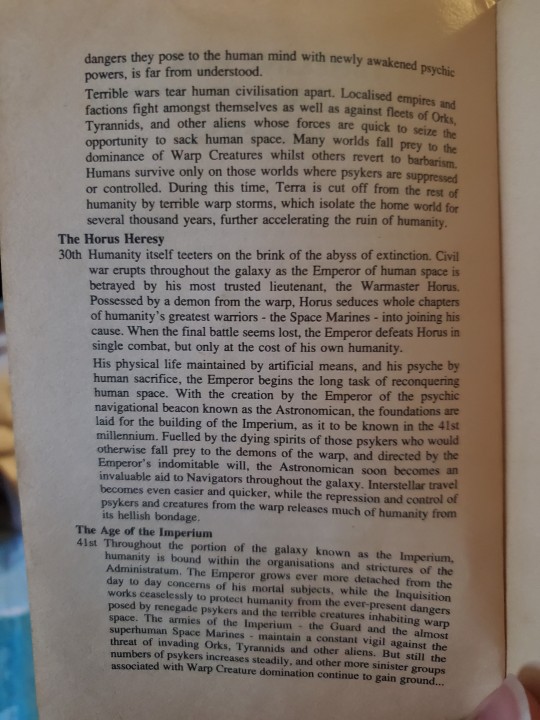
My current much-loved possession, an original 1993 copy of Space Marine. I wanted it for its lovely cover, mostly, (also physical media is supreme) even though it's seen better days. The pretty foil lettering has worn away in spots.
Inside is the timeline that was canon in 1993. You can still get this book today digitally, but I do not know if they include a timeline with it still, and if they do, if they kept it as it was for posterity or made updates.
Transcribed below!
A TIMELINE FOR THE WARHAMMER 40,000 UNIVERSE
15th Millennium - Humanity begins to colonise nearby solar systems using conventional sub-light spacecraft. At first, progress is painfully slow. Separated from Terra by up to ten generations in travel time, the new colonies have to survive mainly on local resources.
The Dark Age of Technology
20th Millennium - Discovery of warp drives accelerates the colonisation process and the early independent or corporate colonies become federated to Terra. The first alien races (including the ubiquitous Orks) are encountered. The development of the Navigator gene allows human pilots to make longer and faster 'jumps' through warp space than was previously thought possible. The great Navigator families, initially controlled by industrial and trading cartels, become a power base in their own right.
Humanity continues to explore and colonise the galaxy. Contacts are established with the Eldar and other alien races. A golden age of scientific achievement begins. Perfection of the Standard Template Construct (STC) system now permits an almost explosive expansion to the stars.
The Age of Strife
25th Millennium - Humanity reaches the far edges of the galaxy, completing the push to the stars begun over ten thousand years before. Human civilisation is now widely dispersed and divergent - with countless small colonies as well as many large, overpopulated planets. Localised wars and disputes with various alien races (especially the Orks!) continue, but pose no threat to the overall stability of human-colonised space. Then, two things happen almost simultaneously. First, humans with psychic powers begin to appear on almost every colonised world. Second, civilisation starts to disintegrate under the stress of widespread insanity, demonic possession, and internecine strife between these new 'psykers' and the rest of humanity. Countless fanatical cults and organisations spring up to persecute the psykers as witches, and/or degenerate mutants. At this time, the existence of the creatures of the warp (later known and feared as demons), and the dangers they pose to the human mind with newly awakened psychic powers, is far from understood.
Terrible wars tear human civilisation apart. Localised empires and factions fight amongst themselves as well as against fleets of Orks, Tyrannids [sic], and other aliens whose forces are quick to seize the opportunity to sack human space. Many worlds fall prey to the dominance of Warp Creatures whilst others revert to barbarism. Humans survive only on those worlds where psykers are suppressed or controlled. During this time, Terra is cut off from the rest of humanity by terrible warp storms, which isolate the home world for several thousand years, further accelerating the ruin of humanity.
The Horus Heresy
30th Millennium - Humanity itself teeters on the brink of the abyss of extinction. Civil war erupts throughout the galaxy as the Emperor of human space is betrayed by his most trusted lieutenant, the Warmaster Horus. Possessed by a demon from the warp, Horus seduces whole chapters of humanity's greatest warriors - the Space Marines - into joining his cause. When the final battle seems lost, the Emperor defeats Horus in single combat, but only at the cost of his own humanity.
His physical life maintained by artificial means, and his psyche by human sacrifice, the Emperor begins the long task of reconquering human space. With the creation by the Emperor of the psychic navigational beacon known as the Astronomican, the foundations are laid for the building of the Imperium, as it to be known in the 41st millennium. Fuelled by the dying spirits of those psykers who would otherwise fall prey to the demons of the warp, and directed by the Emperor's indomitable will, the Astronomican soon becomes an invaluable aid to Navigators throughout the galaxy. Interstellar travel becomes even easier and quicker, while the repression and control of psykers and creatures from the warp releases much of humanity from its hellish bondage.
The Age of the Imperium
41st Millennium - Throughout the portion of the galaxy known as the Imperium, humanity is bound within the organisations and strictures of the Administratum. The Emperor grows ever more detached from the day to day concerns of his mortal subjects, while the Inquisition works ceaselessly to protect humanity from the ever-present dangers posed by renegade psykers and the terrible creatures inhabiting warp space. The armies of the Imperium - the Guard and the almost superhuman Space Marines - maintain a constant vigil against the threat of invading Orks, Tyrannids [sic] and other aliens. But still the number of psykers increases steadily, and other more sinister groups associated with Warp Creature domination continue to gain ground...
#warhammer 40000#warhammer 40k#wh40k#space marine#I hope someone else also finds this mildly interesting
282 notes
·
View notes
Text
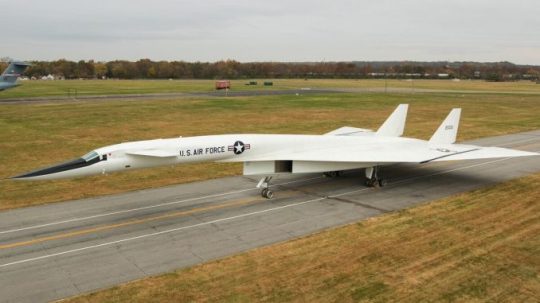
Celebrating 60 Years of the XB-70 Valkyrie Mach 3 Super Bomber
September 16, 2024 Military Aviation
XB-70 60th anniversary
The lone XB-70 Valkyrie is photographed as it is moved to a new building at the Museum of the United States Air Force located at Wright-Patterson Air Force Base, Ohio, on Oct. 27, 2015. Beginning in the late 1950s and continuing through the mid-1960s, tests were conducted at Arnold Air Force Base, Tenn., headquarters of Arnold Engineering Development Complex, in support of the XB-70 program. The now-retired aircraft made its first flight on Sept. 21, 1964. (U.S. Air Force photo by Will Haas)
The experimental legacy of the iconic XB-70 Valkyrie, which made its first flight on Sept. 21, 1964.
An article published on the U.S. Air Force website commemorates the 60th anniversary of the first flight of the legendary XB-70 Valkyrie, a supersonic bomber that captured the imagination of aviation enthusiasts and engineers alike. Known for its sleek and futuristic design, the XB-70 remains a symbol of the experimental and ambitious spirit of Cold War-era aircraft development. Despite only two prototypes ever being built, the aircraft has left an indelible mark on military aviation history.
The XB-70 Valkyrie was originally conceived in the 1950s as a high-speed, high-altitude bomber for the U.S. Air Force Strategic Air Command. At a time when technological advancements were rapidly accelerating, the U.S. Air Force sought a bomber capable of flying faster and higher than the B-52 Stratofortress, its workhorse of the era (as well as the backbone of the strategic bomber fleet today and for some more decades in the future…).
With a planned cruise speed of Mach 3 and an operating altitude of 70,000 feet, the XB-70 promised to outpace and outmaneuver Soviet defenses, which were a growing concern during the Cold War.
One of the most remarkable features of the XB-70 was its ability to “ride” its own shockwave, a design innovation that allowed it to maintain stability and performance at supersonic speeds. The Valkyrie’s iconic delta wing, combined with six powerful jet engines, gave it an exotic and striking appearance, making it one of the most visually distinctive aircraft ever built. Its outer wing panels were hinged, allowing them to be lowered during flight to optimize the aerodynamic performance at high speeds.
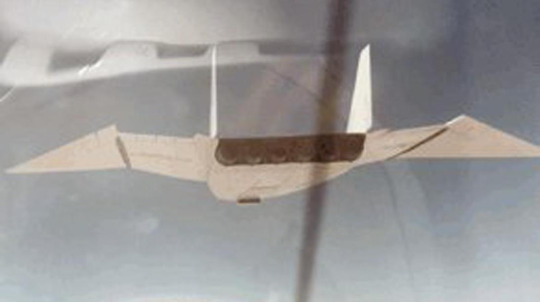
The XB-70 looks like an alien spacecraft from this angle. (Image credit: USAF)
The article highlights the crucial role played by Arnold Engineering Development Complex (AEDC) in the development of the XB-70.
The testing of the Valkyrie’s engines, aerodynamics, and other key components began at Arnold Air Force Base in the late 1950s, well before the first prototype took shape. The AEDC’s facilities were instrumental in pushing the boundaries of what was possible in aviation at the time. One of the earliest tests involved the air-breathing engine nozzles proposed for the XB-70 in March 1958. This was followed by extensive wind tunnel testing of scale models of the Valkyrie, where the aerodynamic characteristics of bombs dropped from the aircraft were also studied.
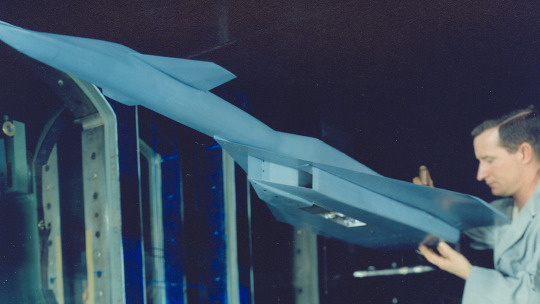
A technician makes adjustments to a scale model of the XB-70 Valkyrie before aerodynamic characteristics related to the aircraft are evaluated in Tunnel A of the von Kármán Gas Dynamics Facility at Arnold Air Force Base, Tenn., headquarters of Arnold Engineering Development Complex, in 1959. Beginning in the late 1950s and continuing through the mid-1960s, tests were conducted at Arnold Air Force Base, Tenn., headquarters of Arnold Engineering Development Complex, in support of the XB-70 program. Only two Valkyries were built, with only one of the pair remaining. The now-retired aircraft made its first flight on Sept. 21, 1964. (U.S. Air Force photo)
Development continued into the early 1960s, with the YJ93 turbojet engines, designed specifically for the XB-70, undergoing rigorous testing at AEDC. These engines were critical to the Valkyrie’s ability to reach and maintain supersonic speeds. However, in 1961, before the first prototype was even completed, the bomber program was canceled due to budget constraints and concerns over the bomber’s vulnerability to Soviet surface-to-air missiles, which had rapidly advanced in capability.
Although the XB-70 bomber program was terminated, the Valkyrie found new life as a research aircraft.
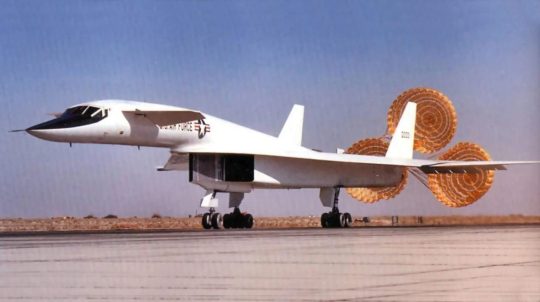
Three drag chutes were needed to slow down the landing roll of the XB-70. (Image credit: Reddit edit The Aviationist)
The U.S. Air Force recognized the potential of the aircraft to serve in aerodynamics and propulsion research, particularly in the study of large supersonic aircraft. Consequently, two XB-70 prototypes were completed, and testing continued, including at AEDC, where a scale version of the XB-70 inlet, paired with a full-scale YJ93 engine, was tested in August 1962.
XB-70A number 1 (62-001) made its first flight from Palmdale to Edwards Air Force Base, CA, on Sept. 21, 1964. The second XB-70A (62-207) made its first flight on Jul. 17, 1965. The latter differed from the first prototype for being built with an added 5 degrees of dihedral on the wings as suggested by the NASA Ames Research Center, Moffett Field, CA, wind-tunnel studies.
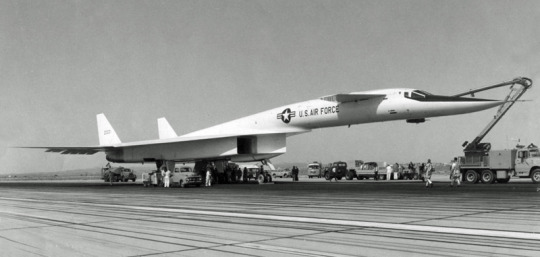
North American XB-70A Valkyrie on the taxiway with a cherry picker. Photo taken Sept. 21, 1964, the day of the first flight. Note: the left main landing gear brakes locked during the landing causing two tires to blow. (U.S. Air Force photo)
While the 62-001 made only one flight above Mach 3, because of poor directional stability experienced past Mach 2.5, the second XB-70, achieved Mach 3 for the first time on Jan. 3, 1966 and successfully completed a total of nine Mach 3 flights by June on the same year.
However, the Valkyrie program suffered a devastating setback in June 1966 when the second prototype was destroyed in a midair collision with an F-104N Starfighter during a photoshoot. This tragic accident resulted in the loss of key personnel and diminished the future prospects of the Valkyrie.

North American XB-70A Valkyrie just after collision. Note the F-104 is at the forward edge of the fireball and most of both XB-70A vertical stabilizers are gone. (U.S. Air Force photo)
Despite this setback, the remaining XB-70 continued to serve as a valuable research platform. In 1967, the U.S. Air Force transferred the aircraft to NASA, where it was used in support of the National Supersonic Transport (SST) program. NASA employed the XB-70 to investigate supersonic flight operations, but the SST program was eventually canceled in 1971, marking the end of America’s efforts to develop a commercial supersonic airliner.
The XB-70 Valkyrie’s final flight took place on Feb. 4, 1969, when it was flown to Wright-Patterson Air Force Base in Ohio. There, the aircraft was placed on display at what is now the National Museum of the United States Air Force, where it remains a testament to the audacious engineering and design of its era.
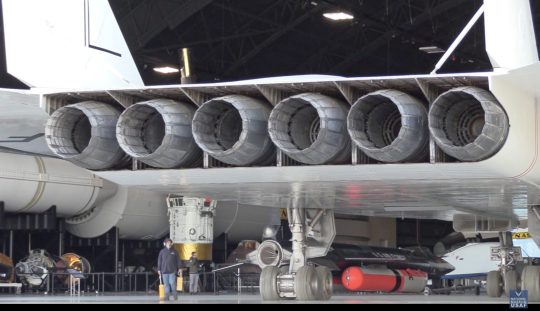
A view of the six massive afterburners on the XB-70 Valkyrie as the aircraft is towed out of its display hangar temporarily for museum maintenance. (Photo: National Museum of the U.S. Air Force via YouTube)
Though only two XB-70s were ever built, their legacy endures: the aircraft’s pioneering advancements in aerodynamics, engine performance, and high-speed flight helped shape the future of supersonic aviation.
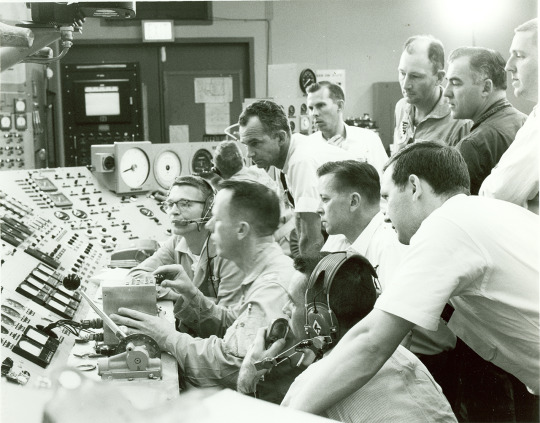
Pilots who were to perform the first test flights for the XB-70 Valkyrie operate the YJ93 engine, the powerplant of the XB-70, while the engine is tested under simulated flight conditions in May 1964 in the Rocket Test Facility at Arnold Air Force Base, Tenn., headquarters of Arnold Engineering Development Complex. This was done to help the pilots familiarize themselves with the performance characteristics of the engine prior to the first XB-70 flight, which occurred on Sept. 21, 1964. Beginning in the late 1950s and continuing through the mid-1960s, tests were conducted at Arnold AFB in support of the XB-70 program. Only two Valkyries were built, with only one of the pair remaining. (U.S. Air Force photo)
The first prototype made a total of 83 flights, amassing 160 hours and 16 minutes of flight time, while the second prototype completed 46 flights, totaling 92 hours and 22 minutes.
The XB-70 Valkyrie, with its daring design and groundbreaking capabilities, continues to captivate aviation enthusiasts and engineers. Its story, though short-lived in terms of operational use, highlights the relentless pursuit of innovation that defines the U.S. Air Force and its engineering partners. Sixty years after its first flight, the Valkyrie remains an iconic symbol of the bold ambitions of Cold War-era aviation.

XB-70 Night Take-off. (Photo via Air Force Materiel Command History Office)
About David Cenciotti
David Cenciotti is a journalist based in Rome, Italy. He is the Founder and Editor of “The Aviationist”, one of the world’s most famous and read military aviation blogs. Since 1996, he has written for major worldwide magazines, including Air Forces Monthly, Combat Aircraft, and many others, covering aviation, defense, war, industry, intelligence, crime and cyberwar. He has reported from the U.S., Europe, Australia and Syria, and flown several combat planes with different air forces. He is a former 2nd Lt. of the Italian Air Force, a private pilot and a graduate in Computer Engineering. He has written five books and contributed to many more ones.
@TheAviationist.com
118 notes
·
View notes
Text
A team of scientists from Nanyang Technological University, Singapore (NTU Singapore) has developed an artificial worm gut to break down plastics, offering hope for a nature-inspired method to tackle the global plastic pollution problem. By feeding worms with plastics and cultivating microbes found in their guts, researchers from NTU's School of Civil and Environmental Engineering (CEE) and Singapore Center for Environmental Life Sciences Engineering (SCELSE) have demonstrated a new method to accelerate plastic biodegradation.
Continue Reading.
302 notes
·
View notes
Text
The Artemis I Mission: To the Moon and Back
The Artemis I mission was the first integrated test of the Orion spacecraft, the Space Launch System (SLS) rocket, and Exploration Ground Systems at NASA’s Kennedy Space Center in Florida. We’ll use these deep space exploration systems on future Artemis missions to send astronauts to the Moon and prepare for our next giant leap: sending the first humans to Mars.
Take a visual journey through the mission, starting from launch, to lunar orbit, to splashdown.
Liftoff

The SLS rocket carrying the Orion spacecraft launched on Nov. 16, 2022, from Launch Complex 39B at NASA’s Kennedy Space Center in Florida. The world’s most powerful rocket performed with precision, meeting or exceeding all expectations during its debut launch on Artemis I.
"This is Your Moment"

Following the successful launch of Artemis I, Launch Director Charlie Blackwell-Thompson congratulates the launch team.
“The harder the climb, the better the view,” she said. “We showed the space coast tonight what a beautiful view it is.”
That's Us

On Orion’s first day of flight, a camera on the tip of one of Orion’s solar arrays captured this image of Earth.
Inside Orion

On the third day of the mission, Artemis I engineers activated the Callisto payload, a technology demonstration developed by Lockheed Martin, Amazon, and Cisco that tested a digital voice assistant and video conferencing capabilities in a deep space environment. In the image, Commander Moonikin Campos occupies the commander’s seat inside the spacecraft. The Moonikin is wearing an Orion Crew Survival System suit, the same spacesuit that Artemis astronauts will use during launch, entry, and other dynamic phases of their missions. Campos is also equipped with sensors that recorded acceleration and vibration data throughout the mission that will help NASA protect astronauts during Artemis II. The Moonikin was one of three “passengers” that flew aboard Orion. Two female-bodied model human torsos, called phantoms, were aboard. Zohar and Helga, named by the Israel Space Agency (ISA) and the German Aerospace Center (DLR) respectively, supported the Matroshka AstroRad Radiation Experiment (MARE), an experiment to provide data on radiation levels during lunar missions. Snoopy, wearing a mock orange spacesuit, also can be seen floating in the background. The character served as the zero-gravity indicator during the mission, providing a visual signifier that Orion is in space.
Far Side of the Moon
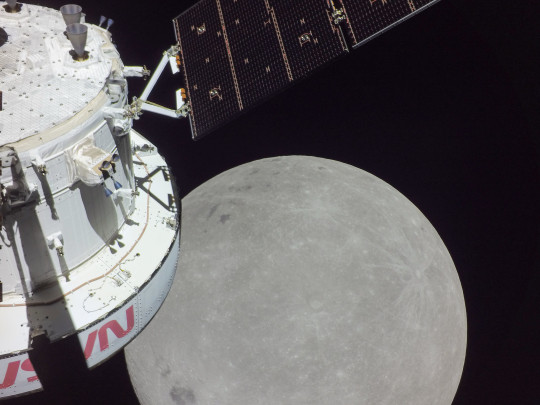
A portion of the far side of the Moon looms large in this image taken by a camera on the tip of one of Orion’s solar arrays on the sixth day of the mission.
First Close Approach

The Orion spacecraft captured some of the closest photos of the Moon from a spacecraft built for humans since the Apollo era — about 80 miles (128 km) above the lunar surface. This photo was taken using Orion’s optical navigational system, which captures black-and-white images of the Earth and Moon in different phases and distances.
Distant Retrograde Orbit

Orion entered a distant retrograde orbit around the Moon almost two weeks into the mission. The orbit is “distant” in the sense that it’s at a high altitude approximately 50,000 miles (80,467 km) from the surface of the Moon. Orion broke the record for farthest distance of a spacecraft designed to carry humans to deep space and safely return them to Earth, reaching a maximum distance of 268,563 miles (432,210 km).
Second Close Approach

On the 20th day of the mission, the spacecraft made its second and final close approach to the Moon flying 79.2 miles (127.5 km) above the lunar surface to harness the Moon’s gravity and accelerate for the journey back to Earth.
Cameras mounted on the crew module of the Orion spacecraft captured these views of the Moon’s surface before its return powered flyby burn.
Heading Home

After passing behind the far side of the Moon on Flight Day 20, Orion powered a flyby burn that lasted approximately 3 minutes and 27 seconds to head home. Shortly after the burn was complete, the Orion spacecraft captured these views of the Moon and Earth, which appears as a distant crescent.
Parachutes Deployed

Prior to entering the Earth’s atmosphere, Orion’s crew module separated from its service module, which is the propulsive powerhouse provided by ESA (European Space Agency). During re-entry, Orion endured temperatures about half as hot as the surface of the Sun at about 5,000 degrees Fahrenheit (2,760 degrees Celsius). Within about 20 minutes, Orion slowed from nearly 25,000 mph (40,236 kph) to about 20 mph (32 kph) for its parachute-assisted splashdown.
Splashdown

On Dec. 11, the Orion spacecraft splashed down in the Pacific Ocean off the coast of California after traveling 1.4 million miles (2.3 million km) over a total of 25.5 days in space. Teams are in the process of returning Orion to Kennedy Space Center in Florida. Once at Kennedy, teams will open the hatch and unload several payloads, including Commander Moonikin Campos, the space biology experiments, Snoopy, and the official flight kit. Next, the capsule and its heat shield will undergo testing and analysis over the course of several months.
Make sure to follow us on Tumblr for your regular dose of space!
#Artemis#LunarMission#SpaceLaunchSystem#Rocket#Space#MegaMoonRocket#Moon#Spacecraft#Orion#NASAMoonSnap#Moonikin#Earth#LunarOrbit#Splashdown#Launch
2K notes
·
View notes
Text
The "Storm"
"The 'Storm' brings frequent anomalies. And also more development and field missions. Sadly, combat is not my thing; luckily, data analysis is!" - X, Xtreme Talent
The "Storm" is an intriguing topic to look into in the world of Reverse: 1999, and a lot of people tend to be confused on how it works alongside the functions of the immunity zones. For this post, this'll essentially be a more detailed explanation on it. This post will cover what the "Storm" is, its patterns, and the function of the immunity zones with Asymmetrical Nuclide R. This'll be a really long post, so hold tight. :) [Spoilers for Chapter 5-6]
What is the “Storm” anyway?
The “Storm”—or the "Emanation" to the Islanders—is a supernatural phenomena that is affecting most of the globe. It destroys the current era of society and reconstructs it into a point in the past or in the future. It “reverses” time, with the tendency to regress through eras. This means human technology increasingly deteriorates while arcanum flourishes.

Being a phenomena caused by arcanum, the “Storm” is difficult to be studied. Basic understanding of the "Storm" requires affinity with arcanum.
The “Storm” is unpredictable; Besides the Manus and the Apeiron to some degree, no one knows when the “Storm” happens, but the closer we get to its occurrence, the easier it is to figure it out. Manus activity is shown to accelerate the "Storm", with events beginning to deviate from the historic timeline due to their influence.
As of ‘The Star’ and Chapter 6, we find that Laplace has been keeping track of possible “critical points.” Critical points indicate where the eye of the “Storm” might be. An “eye” tends to be located at places globally significant, where historical events take place. It can be a cultural event, a significant movement, or a major conflict. These events don’t have to directly affect the entire world, per se. They merely have to be significant enough to leave a mark in the world's history.

Right now, 8 “Storms” have passed and we have one that is currently beginning to take place. With the information we have of each one, we find common themes among them:
1. Most of these “Storms” occur at least 1 year after the other. There are 4 exceptions to it:
1999 (The Progenitor)
1987 (3 years)
1929 (1 day)
1914 (5 months)
2. They’re triggered when the timeline destabilises, or strays from what is the normal ‘course’ of the world’s timeline. (As said by Greta Hofmann)


3. The nature of the “Storm” and the Storm Syndrome are usually based on the themes of the era and the conflict.
A very clear example of this would be the “Storms” of 1966 and 1929. With 1966, we see how the height of the “Storm” deconstructs everything around the critical point with booming bold colours and pop-like art, reminiscent of the UK’s Swinging Sixties (as mentioned by the game itself).
With 1929, we see how the Storm Syndrome affects the mass population of humans, with how they sell food in exchange for gold and money to eat because of how it references the sudden rise in the American stock market. This led to the Wall Street Crash of 1929, and the crash caused an economic recession in the US.


Important notes about the "Storm"
Now we have to keep in mind that there are some things that need to be noted about this phenomenon. For one, the “Storm” doesn’t induce the grandfather paradox, since the survivors of the phenomenon don’t cease to exist whenever they arrive in an era that precedes their lifetime. They don’t encounter the younger versions of themselves either.
Also, since this is an event caused by arcanum, the people who are mainly affected are humans and mixed people who don't have strong arcanum. Pure-blood arcanists tend to be the ones who are the last to be affected by the "Storm," since they only begin to feel the effects once the countdown is approaches near-zero.
The memories of the survivors are quite faded. For example, none of them could remember what happened during 1999 that caused the first “Storm.” Greta and Vertin themselves confirm that they and the Foundation have rather vague memories of that time for reasons yet to be found.


And lastly, as stated before, the “Storm” can be accelerated / triggered early by orchestrating a chain of events that further puts strain on the critical point, and significantly causes disruption in the original timeline. This is the case with 1929 and 1914 right now.
Immunity Zones, Asymmetrical Nuclide R, and Vertin
With these out of the way, there is now space to talk about the points of immunity. For a location to be immune, the area would need a “core” that distributes a high concentration of Asymmetrical Nuclide R.
AN-R is a nuclide that’s present in the “Storm's" rainwater, as well as the fog in Apeiron, the Spinning Wheel, and possibly the Yuān temple in Pei City alongside Uluru in Australia. The nuclide creates a structure that makes it possible to survive the “Storm,” but it is an unstable component that can quickly disappear when isolated from the rain drops.
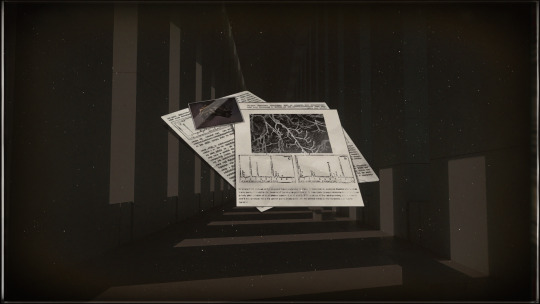
A more stabilised structure of these nuclides are those found imbued in the Manus Vindictae Mask, and the fog surrounding the cores of the immunity zones. However, when one comes close to said fog, it can affect people’s minds to the point of deep sleep until they’re taken out of the area. Otherwise, time flows normally within the immunity zones, unaffected by the “Storm.”
Meanwhile, as the truth remains unknown (noting that Asymmetrical Protein G is a false biomolecule), Vertin is the only person who is able to cross the “Storm” unharmed. She is able to endure most of its effects such as the fog.
For example: In the fog surrounding the Apeiron and the caves of the Island, she wasn’t afflicted with the deep sleep most of the time until she was fully immersed in it. However, she only needed to be woken up by any sort of disturbance. (i.e. pain caused by the bangle)
Despite this however, she’s unable to perceive and predict the “Storm," needing technology from Laplace to keep track of its countdown.

Anyway, AN-R tends to spread throughout an entire area and creates a range of immunity from the “Storm.” This range becomes theoretically weaker as one strays further from the main source; it's why Vertin’s breakaway group got reversed as they played outside the tower, while Madam Z survived while being barely outside the building. (Chapter 3)
It may also explain why the humans did not survive being in Vertin’s suitcase, since the spinning wheel might not be a strong enough core for the nuclide to resonate really well with humans. But I’m not exactly sure why this is, so this is only an assumption for myself.
For now, this is all the information that I have of the "Storm" and the immunity zones. There are some pieces of information that I also found while looking into it, but I've kept these as footnotes for now to go back to later once things begin to come together.
Many ideas can be thought of on how the phenomenon could affect many other areas, but this is essentially how it works based on what was observed in the story. I hope it answers a lot of questions for some who don't quite understand the "Storm." And if there aren't, feel free to ask me anything. Thanks for reaching the end. :)
#reverse 1999#reverse1999#r1999#the storm#vertin#greta hoffman#greta hofmann#two greta tags for the people who don't know how to spell the last name#augh#so much to keep track of
106 notes
·
View notes
Text
💙 GRIZLOCK / FRYNOK 💛

(art by bestosunglass on tumblr+tiktok!!)
HI!!!
so, one of my fav oc x canon ships is with my oc grizznok & frylock!! im so absolutely obsessed w them ahaha lol so I’d like the time to write a short (?) ship analysis! bcus I would like to display their dynamic and a little bit of their backstory.. how they met etc and how they get along :3
LETS BEGIN RAAHHHHH
so!
grizznok heard about frylock through the grapevine from some of his other plutonian friends/acquaintances, as they have a knack for coming down to earth quite often and annoying the aqua teen hunger force lol - and by word, grizznok heard about how frylock was quite an intelligent scientist!
now, grizznok isn’t stupid - he’s quite smart himself (he just has a very silly and joyous personality) as he has his own ship and develops his own plutonian technology which helps him communicate with the different races throughout the galaxy, the only issue is that he wasn’t sure how to acquire a human form. this was something he was searching for a very long time as he wanted to investigate and document the human race without being drawn much attention to himself. hearing that this scientist - who was named frylock - had a lot of experience and was supposedly ‘one of the smartest beings on earth’, grizznok decides to pay him a visit!
landing outside the house of the hunger force (and destroying poor carl’s car in the process, you can’t have an episode where his car is in tact lol) in his spaceship, the group are immediately interested. frylock floats outside and instantly starts to question him. grizznok leaves the ship and introduces himself to frylock, telling him how he wants him to help produce the technology for a human form. frylock is instantly fed up because he knows exactly where grizznok received this misinformation and he isn’t happy about it, but frylock knows that the plutonian isn’t going to leave unless his request is fulfilled. since frylock is so busy, he tells him that his “assistants” will be able to help him out. frylock then turns to explain to shake and meatwad that they should just take grizznok out his sight and maybe take him to the mall for a “makeover” and claim that they’ve given him a human disguise.
obviously, the two are happy to oblige: 1. meatwad is able to get a new friend and have a fun adventure 2. shake is able to lie and transform grizznok into a punk-metal rockstar of sorts, just as he should be in his image. shake and meatwad take grizznok to the mall as shake goes on his whole tangent about how his buddy frylock trusts him with all this human disguise technology because shake is actually the smarter one out of the three. this ‘technology’, however, is a couple hundred piercings, spiked cuffs and black eye makeup. shake explains that grizznok himself isn’t going to be able to see the disguise - but other people will be able to see him as a normal human.
ecstatic, grizznok insists that the two take him back to their home so he can thank frylock for using this very special technology on him, and reassuring him that he will be careful and not hurt this human body.
on the side, frylock has been working on another particle accelerator machine and has also been having to listen to carl all day as he’s lecturing frylock to ‘pay and fix his car’ once more.
the group return home, and grizznok isn’t late to going up to frylock and absolutely showering him in compliments as he’s frantically shaking one of his fries. a little overwhelmed, frylock eventually thanks him sheepishly. grizznok has now gained an admiration for frylock. grizznok returns to his ship and leaves.
shake is holding back his laughter and meatwad is just happy to have gained a new friend. frylock gets mad at shake for gaslighting grizznok into believing he truly has a human form, but calmed down when he’s eventually reassured by shake that they haven’t destroyed any property and that grizznok won’t be in their hair anymore.
‘and how does their relationship develop?’
great question!
upon receiving one of frylock’s ‘pieces of technology’, grizznok is determined to come back down to earth and display his plutonian technology to frylock as any old scientist would wanna hear about space gadgets, right?
so, grizznok (being as annoying as usual), returns to his car-destroying breaking-and-entering antics.. but is is really breaking and entering if they just leave the doors open?- is grizznok’s exact mindset.
frylock, by surprise, is quite intrigued by these gadgets - it’s safe to say this isn’t grizznok’s last trip to their home. it eventually gets to the point where frylock insists that he comes down more often to show him more of this technology, or that he can show grizznok some things he’s working on/has invented. it’s becoming increasingly obvious that frylock is starting to enjoy grizznok’s company and that he’s spending a lot more time with him.
frylock has even offered to grizznok that he’s free to stay the night wherever, but has to sleep on the cushioned chair in front of the TV.. shake isn’t happy with this as he has to sleep in meatwad’s closet when grizznok decides to stay over.
time passes, a lot more interests are shared and a lot more ‘dates’ are went on and frylock decides to ask grizznok to be his boyfriend. grizznok obviously says yes!
‘headcanons?!’
ofc!?! why wouldn’t I stick them here!?
- ever since frylock has recognised his feelings, a lot of his research has actually gone into figuring out how to create a machine that can shapeshift species - so that he can give grizznok what he really wants.. a human form.
- despite the calendar barrier, frylock and grizznok have tried their hardest to celebrate each other’s birthdays.
- frylock has very easily picked up on grizznok’s personality traits, hobbies, habits, and so much more - most of which grizznok hasn’t even recognised in himself.
- with this, frylock has noticed that grizznok is quite the hypersomniac. he isn’t sure if this is a sign of grizznok overworking himself, or if this just comes with his species, but nonetheless he allows grizznok to sleep whenever he does doze off and occasionally carries him to his (frylock’s) bed or back to his sleeping quarters on his ship.
- grizznok occasionally cooks plutonian meals for frylock, even considering the fact that he’s awful at cooking..
- when grizznok got into playing the guitar, frylock taught him how to set up the amps/speakers.
- frylock is grizznok’s no. 1 supporter when it comes to his music! he’s also helped him produce it!
- grizznok likes to brag about frylock to all his space friends, giving a good word about frylock’s invention and to his reputation overall.
- grizznok gets into the things frylock likes in secret so he has an understanding on what he’s talking about, because he knows it makes him happy.
this is all I have so far - it I’d love to hear some headcanons you guys have for them!!!
they’re my favs hehe…
#aqua teen hunger force#athf#aqua teen forever#artists on tumblr#art#athf fanart#athf oc#aqua teen hunger force oc#athf meatwad#athf frylock#athf carl#athf shake#athf master shake
66 notes
·
View notes
Text
I would like to request some prayers. I just lost my job last week and am currently looking for a new one. My dad also recently lost his job.
We have a startup company we are trying to get funding for to support our families, but for years we have been unable. Our company (essentially 3 people right now) is developing a needle-free and truly pain-free glucometer. One of our hurdles to obtaining funding has been our prototype not being 100% functional and accurate/precise.
My prayer request is that God will give us the wisdom, graces, and ability to quickly complete our prototype and obtain funding. This would allow us to support our families and accelerate the development of our technology to benefit diabetics, who's only option currentlu is to be stabbed with a needle and take a sample of blood to check their blood glucose levels.
If God does not Will it now, then I ask that he provides us the graces to job search well and that the right opportunities for us will present themselves and we can get hired quickly.
I know God will provide for us, but I've seen what the power of prayer has done, including the prayers of those of us on tumblr. We dont have a lot of resources to be without an income for very long, so I appreciate your prayers. Thank you.
65 notes
·
View notes
Text
Technology Leadership Program from MIT Professional Education - Northwest Executive Education
Technology Leadership Program from MIT Professional Education is an intensive multi-modular program for technology leaders and practitioners.
https://northwest.education/mit-pe-technology-leadership-program-tlp/
#mit-techonology-leadership-program#mit-tlp#MIT-PROFESSIONAL-EDUCATION-TECHNOLOGY-LEADERSHIP-PROGRAM#mit-leadership-program#mit-leadership-certificate#mit-executive-leadership-program#chicago-booth-accelerated-development-program#chicago-booth-adp#chicago-booth-executive-education#chicago booth amp#chicago accelerated development program#adp program#adp Chicago#accelerated development programme#booth executive education#chicago executive education#chicago booth london jobs#chicago business schoo#adp program review#chicago booth management programs#accelerated executives development program#executive education#Northwest Executive education
0 notes
Text
If Ugandans have a social safety net, it is woven from banana fibers, and if there is a clear path to socialism, it will be lined with banana leaves. The lusuku model, premised on intercropping and smallholder farming, could be the basis for national agrarian reform that improves the lives of Uganda’s agricultural workers without accelerating the destruction of the natural environment. Uganda faces increasing difficulty feeding itself because of climate extremes and land degradation, and this affects farmers more significantly than anyone else. Moreover, since the 1990s, the ruling National Resistance Movement regime sold off and dismantled most of the coffee, tea, and cotton growers cooperatives, leaving smallholder farmers in the hands of the predatory middlemen which cooperatives had been established to protect them against. Unable to collectively bargain and exposed to dramatic fluctuations in the market prices for cash crops, many people left rural areas to search for employment in cities. This has been a driving force behind the massive inequality between rural and urban workers. Ugandans now produce more food than they consume, even exporting to other countries in the region, yet 41% of people are undernourished, and agricultural production has decreased over the last 20 years. For the most part, the strategy pursued by Uganda’s government has been to encourage the development of ecologically disastrous intensive agriculture for export, privileging foreign investors rather than developing the infrastructure that would benefit peasants. Indeed, while more than 70% of Ugandans are employed in agriculture, the sector only receives around 4% of public investment, and projects aimed at helping smallholder farmers have had very little success, even by their own standards. Many of the government’s investments in agriculture very clearly advantage larger landowners, to the detriment of the poorest farmers. For example, most of the government’s investment in labor-saving technologies has been spent on tractors, which are great for large plots but largely unaffordable or unsuitable for the average farmer, whose plot is usually between 1-3 acres large. However, a socialist transition premised on agroecological reforms could make use of the existing lusuku model to create the kind of growth that actually improves poor farmers’ lives without destroying their environment. This could begin with reestablishing cooperatives and engineering agricultural prices around social needs and goals, like guaranteeing access to food. Research from around the world has shown that while large, monocrop plantations are good at producing huge volumes of one crop, smallholder farms are more productive when evaluated on a per-unit area and are capable of securing national food sovereignty. Why, for example, should Ugandans buy rice imported from Pakistan or Vietnam when banana intercropping yields more calories per hectare than rice? Lusukus could feed the nation without relying on foreign experts, development aid, or the capital-intensive inputs now being imported to grow for export. Because lusukus are far better for the soil, they also improve the nation’s capacity to resist severe floods and drought, effects of climate change that hit poor farmers hardest. In these ways, the lusuku model could provide a sustainable path to socialist development.
287 notes
·
View notes